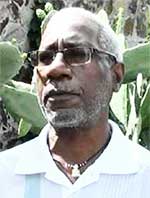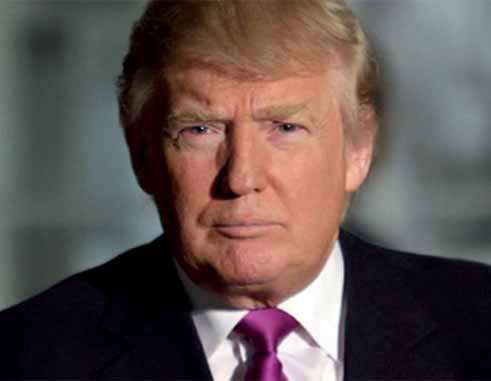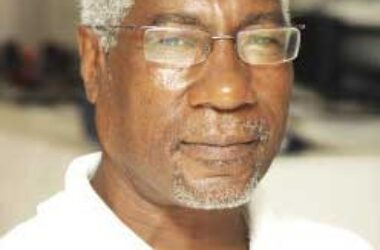Many in the know doubt OPIC can deliver what the CBI didn’t in 35 years and warn Caribbean countries against depending on promised increased US investments to avoid hoping against hope.

BEFORE 1979, America’s main interest in the Caribbean was primarily as a neighbouring tourist destination where Rum and Coke flowed freely and the best of sea and sand, sun and fun could be had for ‘just a few bucks’.
Washington’s political interest was in Jamaica and Guyana, where the Michael Manley and Forbes Burnham governments had officially described their policies as being influenced by ‘Democratic Socialism’ and ‘Cooperative Socialism’, respectively.
Washington seriously undermined Manley’s People’s National Party (PNP) administration, its socialist programmes eventually ground to a halt by loan conditions laid down by the International Monetary Fund (IMF).
Guyana too paid a price, especially after Burnham allowed it be a transit base for Cuban troops sent urgently to Angola to successfully resist and repel advancing South African-backed mercenary forces.
But Washington really started paying more attention to the region after the 1979 Grenada Revolution by increasing its military presence and entering into bilateral agreements with Caribbean countries.
The invasion of Grenada in October 1983, however, was followed by the launching of the multilateral Caribbean Basin Initiative (CBI) by the Reagan Administration on January 1, 1984.
The launching of the CBI followed the US success in securing Caribbean blessings and support for its Grenada invasion.
There was much media hype as Washington promised to change the Caribbean Basin’s future for better and forever.
But, as it turned out, the CBI has never really delivered on President Reagan’s promises, despite it being revisited and supposedly upgraded with legislative amendments in 1990 and 2002.
There was similar hype 35 years later after President Donald Trump met five Caribbean leaders at his private Florida Golf Resort in March 2019 and promised to dispatch a top US private sector investment team to their region to examine possibilities of reinvigorating US investments in the region.
True to his promise and his guests’ expectations, a top delegation from the Overseas Private Investment Corporation (OPIC) – a US Government agency – visited the region two months after the Florida presidential parley, to examine possibilities and advise US companies on how best to invest profitably in the ‘emerging markets’ visited.
There’s no doubt that President Trump’s promises to the five Caribbean leaders (from the Bahamas, Dominican Republic, Haiti, Jamaica and Saint Lucia) were in one way or another associated with his overall Venezuela strategy.
The OPIC delegation here unwittingly admitted just that much during a brief media interview following meetings with the Prime Minister and his Cabinet of Ministers.
OPIC’s (Acting) President and CEO David Boghigian and his delegation had already visited and met with leaders of the other four Caribbean nations before visiting sites in Saint Lucia for proposed cruise ship and cargo facilities and a cross-island highway.
But just how much and how fast OPIC can deliver investments is left to be seen, especially as it is merely a governmental advisory agency recommending if, where and when private US businesses should invest abroad.
The CBI was specifically designed for the Caribbean, but has been unable – for 35 years — to deliver to the CARICOM and OECS region(s) in the ways and means described when it was launched.
The OPIC, on the other hand, is responsible for advising US private sector businesses on where to invest, not only in the Caribbean, but around the world.
Those in the know have deep and strong doubts that OPIC will be able to deliver what the CBI hasn’t, just as with the North American Free Trade Area (NAFTA) Agreement between the US, Canada and Mexico, which has had to be revisited again and again for its failure to live up to the hype surrounding its launch in 1994.
Successor Presidents George H.W. Bush and Bill Clinton both put the finishing touches to President Ragan’s 1980 campaign proposal for a North American Common Market, but two Presidents later, the Trump White House has re-shaped NAFTA much in its own image and likeness.
In the Caribbean’s case, President Reagan’s promises of increased support have been followed systematically by each succeeding occupant of the Oval Office.
Clinton’s promises resulted in the US opposing and erasing the preferential tariffs Caribbean bananas enjoyed in Europe in favour of US-owned banana conglomerates in Latin America; Obama promised US natural gas as an alternative for abandoning Venezuela’s PetroCaribe preferential mechanism; and Trump has returned to Reagan’s undisguised Monroe Doctrine strategy of offering both the Carrot and the Big Stick to governments of the region.
Trump, as author of ‘The Art of The Deal’ and lead actor in ‘The Apprentice’, is no stranger to talking in tones that fit the deal or the set.
In the case of the Mar-a-Lago meeting, no official press release followed what was repeatedly described officially as a private meeting between the President and his Caribbean guests, a pre-meeting statement only saying it was to discuss ‘trade, energy, investment and security concerns.’
President Trump also ‘reaffirmed the commitment of the United States to working with its partners in the region to foster economic growth, counter predatory investment practices and strengthen security cooperation.’
The OPIC delegation came to Saint Lucia ‘to see the government’s vision for Saint Lucia and what that vision can become’, with Bohigian reiterating to the Saint Lucia Prime Minister that ‘We welcome the opportunity to develop a pipeline with you and meet your development goals,’ while further underscoring ‘Saint Lucia’s assistance to the US on the Venezuela issue.’
According to the OPIC CEO, ‘There is interest from President Trump to invest more in Saint Lucia” and “our next step is to go back to Washington and help policymakers understand the environment down here from a strategic standpoint.’
He added, ‘More importantly, what we can do in the days that follow, is talk to investors across the United States to help them understand the opportunities you are building here in infrastructure, tourism and beyond, where we can help empower entire societies.’
All of that may sound or read well. But, matched against the facts, none inspires hope.
For starters, since 1974 OPIC has only been able to attract an average of US $74 annually to the entire Caribbean region – and not only CARICOM nations.
On the other hand, the three projects visited here by the OPIC delegation will cost much more than that entire amount to even get off the ground.
American investors have a mainly bullish outlook on markets and investment opportunities and have not yet been encouraged to settle for the comparatively lower rates of return on their profits from Caribbean investments if and when other more lucrative possibilities exist elsewhere.
OPIC, as a governmental advisory body, is always expected to dance to the tune of and sing from the same hymn sheet as that dictated by White House policy of the day.
In the case of President Trump, the likes of OPIC have long learned the drill, to blow hot and cold when desired, to say the things President Trump will want to hear them say – but also to come out straight and up-front with American investors about the real possibilities of profitable investments in the five CARICOM nations selected by President Trump for special OPIC treatment.
Nothing said by President Trump or the OPIC CEO to date suggests that US investments will soon come flowing into Saint Lucia with the speed some expect or believe.
But then, with President Trump, you never know what deal he made with the Caribbean quintet he not-so-secretly met behind closed doors.
For all we know, each may have been promised or handed a trump card of the type that guaranteed how each country later voted at the OAS in relation to Venezuela.
But what if, like the much-more-heralded CBI, the OPIC trump card turns out to be a Joker of the Pack?
We’ll sure see – in years to come!













